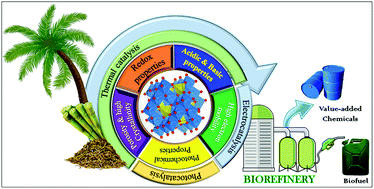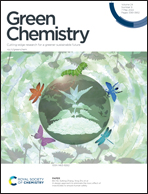Spinel-based catalysts for the biomass valorisation of platform molecules via oxidative and reductive transformations
Abstract
The heterogeneous catalytic valorisation of renewable lignocellulosic biomass for platform and/or value-added chemicals is an efficient strategy from green and sustainable chemistry perspectives. Biorefineries largely rely on utilizing acid catalysts and hydrogenation/oxidation reactions. Metal oxides have been extensively utilized as solid acid catalysts in these transformations. Among these metal oxides, spinels can be identified as high potential catalysts due to the possibility of fine-tuning the metals in the framework, consequently modifying the structural (acidity and basicity), physical (surface area and porosity), optical, and electronic properties, and high thermal stability giving rise to greener catalytic reactions. Spinels are eco-friendly heterogeneous catalysts that are easily separable (either magnetically separable or just by simple filtration) and recyclable, and fulfil the criteria of green chemistry principles. This review presents advancements in spinel and spinel-based catalysts (in situ generated active spinels from metal oxides) for the catalytic hydrogenation and oxidation of biomass-derived platform molecules to produce value-added fuels and chemicals. Also, the structural properties of these catalysts have been correlated with the catalytic performance to explore the bottlenecks in this area. The challenges and future opportunities in spinel-assisted biomass transformations are also discussed.

- This article is part of the themed collection: Green Chemistry Reviews


 Please wait while we load your content...
Please wait while we load your content...